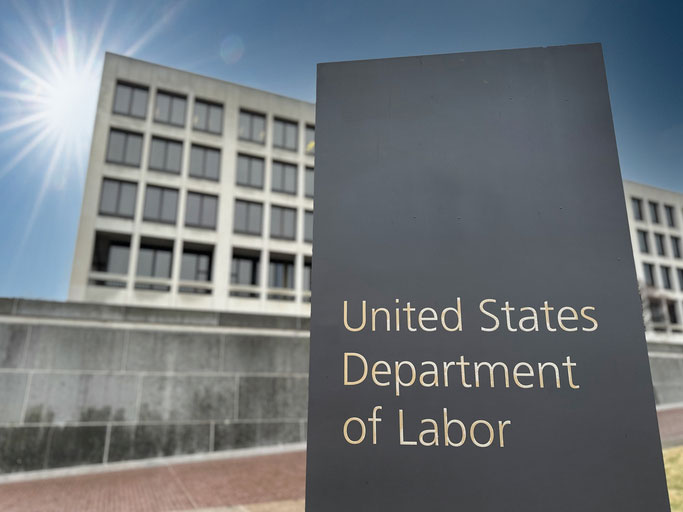Written by Dr. Emily R. Thornton, PhD, LCADC , Last Updated: November 13, 2025
Peer support specialists earn a median annual salary of $45,120 ($21.69/hour), according to 2024 BLS data. Salaries range from $33,280 to $63,850, depending on location and experience, with government positions typically paying the highest. Part-time work is everyday in this field.
Table of Contents

Substance abuse treatment in general is not a field you enter because you’re trying to get rich. That’s even more true for those dedicated souls who take up the cause through peer support counseling. Having already experienced a substance use disorder (SUD) personally and come out the other side, or at least having come very close to the painful reality of it by seeing a close loved one go through it, their commitment and sense of mission are enormous.
But even the most dedicated peer support specialist has to put food on the table. While many peer support counselors work part-time, effectively giving back to the community that helped rescue them, many rely on the job as a primary means of support.
You need to know what to expect from the paycheck you’ll receive as a peer support specialist. That number is a sum of various factors, including location, experience, and education. This guide breaks down the latest 2024 salary data from the Bureau of Labor Statistics to give you a realistic picture of what peer recovery specialists earn across the country.
Understanding Our Salary Data Source

Peer support specialists occupy a pretty unique niche in substance abuse counseling. They aren’t clinical counselors and aren’t expected to get the full range of training and on-the-job experience as those roles require. It’s a unique role, so they don’t really have counterparts in other fields that you could look to for comparable salaries when making an estimate.
They often work part-time and may not consider peer counseling to be their primary or final career. These are the kinds of complications that make it tricky to define peer support in a stand-alone category, even for the Bureau of Labor Statistics (BLS), the agency responsible for delineating American job categories and collating data on salaries and employment.
Rather than establishing a category devoted to substance abuse peer counselors, the BLScategorizes them under the much larger category for social and human services assistants.
Social and human services assistants are full-time employees who typically qualify for the role through a combination of on-the-job training and specialized training delivered through a certificate course. They often hold professional certifications. In all these ways, this makes it a category that’s very well aligned with peer support specialists.
BLS defines the role as one that involves working in rehabilitation for nonprofits, private social services providers, and government agencies, a job that may require working off-hours, including nights and weekends. That’s starting to sound like a peer support specialist more and more.
It’s not a perfect one-for-one match, but it’s clear in this definition that peer support is among the jobs included in this broader classification, so it’s the one we relied on for the salary data we extracted.
How Much Does a Peer Support Specialist Make?

According to the national numbers for social and human services assistants, the average annual salary reported in 2024 was $47,090. The median, which is generally recognized as a better metric for understanding what you can expect to earn, came in at $45,120 annually. That translates to an hourly wage of about $21.69 per hour.
These 2024 figures represent significant increases from previous years, reflecting growing demand for peer support specialists nationwide. The field employed over 424,000 professionals as of May 2024, making it one of the larger segments within behavioral health support services.
Many peer support positions are paid on an hourly basis rather than as salaried employees. Part-time work is everyday, especially in nonprofit settings and residential facilities. Understanding both the hourly and annual figures helps you assess opportunities that may be structured either way.
Understanding the Salary Range
The salary distribution reveals substantial variation based on experience, credentials, and work environment. Entry-level positions typically fall near the 10th percentile, with an annual salary of $33,280, while the most experienced peer specialists in the 90th percentile earn $63,850 or more. The middle 50% of peer support specialists earn between $37,770 and $53,040 per year.
Salary by Work Setting
Peer recovery specialists can work in any environment where addiction is regularly treated. They’re more in demand and more highly paid in some of those environments than in others. Based on the 2024 data, here’s how different work settings compare:
Government-sponsored recovery programs typically offer the highest compensation. State agencies and local city and county programs often provide full-time positions with median salaries ranging from $46,000 to $52,000, along with benefits packages that include health insurance, retirement plans, and paid time off.
Residential care facilities and community rehabilitation services tend to pay somewhat less, with median salaries typically ranging from $38,000 to $42,000. Individual and family services fall in the middle, with a median of around $43,000 to $46,000. These differences reflect both funding sources and the structure of full-time versus part-time employment in each setting.
Salary by State and Metro Area
Just like any other sort of job, pay rates for peer support specialists are influenced by location. Living in a high-cost-of-living area will likely drive up salaries for all kinds of jobs. Similarly, in areas with lower living expenses, positions are listed with lower starting salary offers.
There’s also a regional supply and demand that comes into play. Areas that require more peer support staff but lack sufficient qualified personnel to fill those roles tend to pay higher salaries.
State-by-State Salary Breakdown
Here’s a comprehensive state-by-state breakdown of salary levels based on 2024 BLS data for social and human services assistants. The table shows median salaries along with 90th percentile figures to give you a sense of earning potential in each state:
| State | Employment | Median Annual Salary | 90th Percentile Salary |
|---|---|---|---|
| Alabama | 3,260 | $34,040 | $46,890 |
| Alaska | 1,070 | $46,210 | $63,360 |
| Arizona | 6,900 | $41,150 | $52,620 |
| Arkansas | 2,830 | $37,340 | $49,250 |
| California | 58,830 | $51,780 | $74,140 |
| Colorado | 4,730 | $46,730 | $63,350 |
| Connecticut | 9,080 | $45,090 | $60,880 |
| Delaware | 1,170 | $40,870 | $51,520 |
| District of Columbia | 1,880 | $57,210 | $87,230 |
| Florida | 21,820 | $42,790 | $58,890 |
| Georgia | 8,720 | $37,200 | $50,310 |
| Hawaii | 2,630 | $43,040 | $56,090 |
| Idaho | 3,450 | $46,060 | $57,720 |
| Illinois | 20,460 | $45,700 | $71,330 |
| Indiana | 11,410 | $41,130 | $55,510 |
| Iowa | 5,100 | $40,300 | $58,810 |
| Kansas | 5,840 | $40,540 | $53,290 |
| Kentucky | 4,480 | $36,560 | $53,240 |
| Louisiana | 2,860 | $33,520 | $51,170 |
| Maine | 4,620 | $46,320 | $56,330 |
| Maryland | 6,470 | $45,280 | $65,980 |
| Massachusetts | 11,870 | $47,280 | $76,300 |
| Michigan | 12,920 | $38,530 | $57,880 |
| Minnesota | 11,290 | $48,860 | $65,330 |
| Mississippi | 2,500 | $28,900 | $47,140 |
| Missouri | 5,000 | $38,740 | $54,230 |
| Montana | 1,670 | $36,910 | $45,570 |
| Nebraska | 1,830 | $37,990 | $49,070 |
| Nevada | 2,410 | $39,240 | $59,130 |
| New Hampshire | 2,330 | $45,910 | $57,770 |
| New Jersey | 15,060 | $49,000 | $76,010 |
| New Mexico | 2,880 | $44,980 | $60,940 |
| New York | 40,700 | $46,210 | $64,680 |
| North Carolina | 8,280 | $40,470 | $57,310 |
| North Dakota | 1,280 | $47,010 | $67,620 |
| Ohio | 11,170 | $38,860 | $50,810 |
| Oklahoma | 2,460 | $37,450 | $54,060 |
| Oregon | 10,820 | $48,660 | $64,130 |
| Pennsylvania | 23,590 | $43,340 | $59,560 |
| Puerto Rico | 5,870 | $31,540 | $44,040 |
| Rhode Island | 2,020 | $47,620 | $62,170 |
| South Carolina | 3,880 | $37,430 | $58,940 |
| South Dakota | 900 | $37,750 | $46,470 |
| Tennessee | 5,100 | $38,710 | $52,310 |
| Texas | 21,890 | $44,030 | $59,910 |
| Utah | 6,260 | $40,500 | $54,520 |
| Vermont | 2,150 | $46,370 | $55,100 |
| Virginia | 8,260 | $43,190 | $59,590 |
| Washington | 6,850 | $49,940 | $68,890 |
| West Virginia | 3,290 | $37,860 | $51,780 |
| Wisconsin | 6,950 | $46,420 | $69,630 |
| Wyoming | 730 | $42,870 | $60,500 |
The highest-paying states include the District of Columbia ($57,210 median annual wage), California ($51,780), and Washington ($49,940). When considering these locations, it’s essential to factor in the cost of living. States like Mississippi ($28,900), Louisiana ($33,520), and Alabama ($34,040) show lower median salaries but also have significantly lower living costs.
Most peer support specialists would naturally find work in the very same communities and neighborhoods they already live in. But maybe you’re thinking about leaving your hometown to distance yourself from the people and places that were once part of your own recovery process. If that’s the case, then salary information from around the country may help influence your decision about where to go.
Factors That Affect Your Earnings
While peer support roles intentionally don’t require high levels of education or extensive training, that doesn’t mean employers don’t appreciate job candidates who go the extra mile to prepare for the job.
Professional Certification
Although you can land these jobs with only a high school diploma, earning National Certified Peer Recovery Support Specialist (NCPRSS) certification through NAADAC will set you up for success in the role. Certified peer specialists often command higher starting salaries and are more competitive for full-time positions with benefits.
College Education Benefits
A college degree in substance abuse counseling could get you even further. The kind of general liberal arts training that comes with a standard associate or bachelor’s degree in the United States brings some substantial benefits:
- Better written and verbal communication skills
- More organizational and administrative expertise
- Stronger problem-solving and critical-thinking abilities
- Greater understanding of clinical concepts and treatment approaches
These are valuable things to have in any job. For a certified peer support specialist position, you may be able to make a tangible difference in your starting salary and potential raises.
Experience and Career Growth
There’s no real yardstick for determining this effect. Still, it’s not unreasonable to assume that you could start pushing more toward the 90th percentile with the right combination of certification, education, and experience. At the 90th percentile, peer support specialists make $63,850 or more nationally. At this level, the BLS shows the lowest salary it takes to crack the top 10%, so once you’ve arrived there, within limits, it only goes up.
Consider that the jump from the median ($45,120) to the 90th percentile ($63,850+) represents approximately a 42% increase in earnings. While this won’t happen overnight, a combination of certification, continued education, specialization in areas such as medication-assisted treatment (MAT) or co-occurring disorders, and several years of experience can help you achieve this level.
In high-paying states like Dithe strict of Columbia, Massachusetts, or California, 90th percentile earners make $74,000 to $87,000, demonstrating significant earning potential for experienced, credentialed peer support specialists in the right markets.
Frequently Asked Questions
Do peer support specialists receive an hourly wage or a salary?
Most peer support specialist positions are paid hourly, with a median hourly rate of $21.69, according to 2024 BLS data. Many positions are part-time, especially in nonprofit settings and residential facilities. Full-time salaried positions are more common in government agencies and large treatment centers, where you’re more likely to receive benefits like health insurance and paid time off.
What’s the highest-paying state for peer support specialists?
District of Columbia offers the highest pay at $57,210 annually, followed by California at $51,780 and Washington at $49,940. When considering these states, it’s essential to factor in the cost of living. At the 90th percentile, DC peer specialists can earn up to $87,230, while those in California typically top out around $74,140. Minnesota, Oregon, and Massachusetts also offer substantial salaries above $47,000 median while having more moderate costs in some areas.
Does certification increase a peer support specialist’s salary?
Yes, earning NCPRSS certification through NAADAC or state-specific peer specialist credentials can enhance your marketability and increase your starting salary. While exact figures vary by employer and location, certified peer specialists are often preferred for full-time positions with benefits. Many government positions require or strongly prefer certification, and these typically offer salaries closer to the national median or above.
Can peer support specialists make a living wage?
It depends on your location and whether you work full-time or part-time. Many peer support specialists work part-time and combine this role with other income sources or see it as a stepping stone to clinical counseling roles. Full-time positions typically provide a livable wage with benefits in most areas. The national median of $45,120 translates to approximately $3,760 per month before taxes, which is a livable income in many parts of the country when combined with employer benefits.
How do peer support specialist salaries compare to those of substance abuse counselors?
Peer support specialists earn less than licensed substance abuse counselors. The median salary for peer specialists is $45,120 (2024 data), while substance abuse counselors with clinical credentials typically earn between $49,000 and $56,000 or more, depending on their level of licensure. Many peer specialists use this role as a starting point and pursue further education and clinical credentials to advance their careers and increase their earning potential.
Are peer support specialist jobs mostly part-time?
Yes, many peer support positions are part-time, particularly in residential treatment facilities, nonprofit organizations, and community-based programs. Government agencies at the state and local levels are more likely to offer full-time positions with benefits. If you’re seeking full-time work, focus your job search on government-funded programs, large treatment centers, and hospital-based addiction services.
Key Takeaways
- Peer support specialists earn a median annual salary of $45,120 ($21.69/hour), according to 2024 BLS data. a
- Salaries increased from 2023 to 2024, reflecting growing demand for peer support services nationwide.e
- Top-paying jurisdictions include the District of Columbia ($57,210), California ($51,780), and Washington ($49,940)
- The top 10% of earners make $63,850 or more nationally, with certification and education helping you reach this level.
- Government positions typically offer the best combination of pay and full-time employment with benefits.s
- Many positions are part-time and hourly rather than full-time salaried roles.
- NCPRSS certification and college degrees can increase earning potential and open doors to full-time positions
Ready to Start Your Career as a Peer Support Specialist?
Understanding the salary is just the first step. Learn about certification requirements, training programs, and how to break into this rewarding field where you can make a real difference in people’s lives.
2024 US Bureau of Labor Statistics salary and employment figures for Social and Human Service Assistants (Peer Recovery Specialists) reflect state and national data, not school-specific information. Conditions in your area may vary. Data accessed November 2025.







